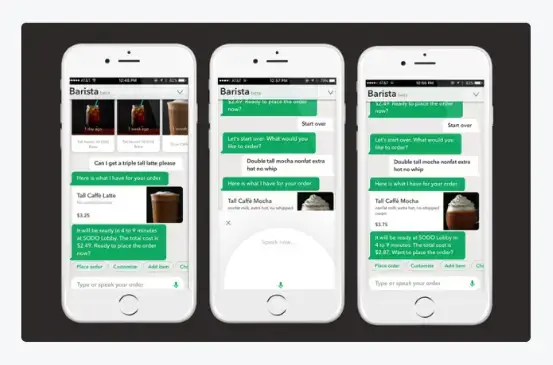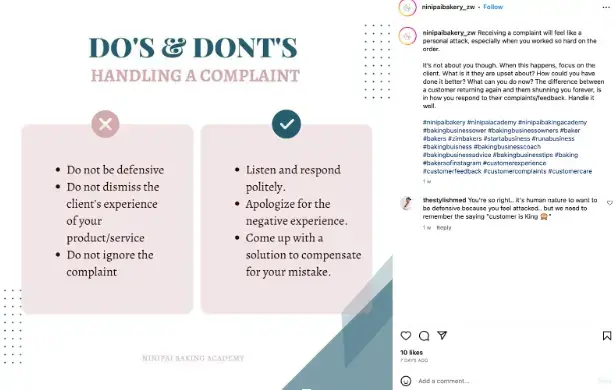Effective customer communication is the lifeblood of any successful business – and it’s easy to see why. It forms the foundation of solid customer relationships, builds trust, and fosters customer loyalty.
In today’s fast-paced digital retail landscape, where customers have numerous options and high expectations, businesses must prioritize their customer communication strategy to stand out.
Looking to get started? You’ve come to the right place.
This article will outline an actionable roadmap to excellent customer communication, whether you’re about to launch a new business or have recently opened your doors. We’ll explore the power of omnichannel communication strategies and seven best practices for standing out from the crowd. Let’s dive in!
How to Understand Your Target Audience
- Understand who you’re talking to – or know your target audience.
- Conducting thorough market research lets you gain valuable insights into customer preferences and behavior. Analyzing data from sources like surveys, social media, and customer feedback allows you to identify patterns and trends that shape your audience's needs and expectations.
- Create customer personas - this is a powerful tool for tailoring your communication strategies
- Incorporate demographic information, interests, and pain points by building these fictional representations of your ideal customers.
- These personas help you empathize with your audience and craft personalized messages that resonate with their desires.
Building a clear picture of your target audience won’t be easy. But it will allow you to build stronger connections and deliver communication that speaks to their desires and aspirations.
Choosing the Right Communication Channels
Regarding customer communication, selecting the appropriate channels plays a crucial role in delivering exceptional experiences.
Selecting the proper channels should be based on customer preferences and your business needs, so take time to pinpoint where your target audience is most active and receptive. Additionally, consider integrating channels like WhatsApp Shared Inbox to enhance real-time communication and engagement.
Implementing WhatsApp API enables businesses to centralize customer interactions, streamline responses, and improve overall communication efficiency.
If WhatsApp is a preferred channel for your audience, use a WhatsApp bulk message sender tool to reach a larger number of recipients efficiently, making it easier to engage with your audience on their preferred platform.
Then, you can also leverage WhatsApp automation to use this wonderful platform for marketing, sales, as well as customer service, helping you boost overall customer engagement and retention.
Unlock the full potential of WhatsApp as a preferred communication channel for your audience by integrating the WhatsApp Business API. Some channels to consider include:
- Phone: Ideal for personal conversations and complex inquiries. Leveraging a VoIP phone service can further improve call quality and accessibility.
- Email: Great for formal and detailed communication or providing a written record.
- Live chat support: Offers real-time interactions and quick resolutions, so your customer support team can provide immediate assistance.
- Social media: Enables brand engagement, reaching a broader audience.
For many retailers, adopting an omnichannel strategy is a must in today’s digital landscape. In short, this means offering a consistent experience across various platforms.

Source: sproutsocial
7 Customer Communication Best Practices
- Personalize your communications
- Build a consistent brand voice
- Respond to customers quickly and efficiently
- Promote active listening and empathy
- Utilize automation and chatbots
- Gather and analyze customer feedback
- Provide routes for handling complaints
Once you’ve sorted your target audience and set of communication channels, you’ll need to devise a strategy for interacting with your customers.
Employing client onboarding tools can significantly improve the initial customer experience, setting a strong foundation for ongoing communication.
The best approach here is to put yourself in your customers’ shoes and consider the front-end experience of your online presence. You’ll also want to define your goals early, so you can then evaluate and rework your strategy as necessary.
With that in mind, let’s explore the critical communication best practices for new businesses to follow.
1. Personalize your communications
Personalizing your messaging is crucial for any business, but it’s also highly beneficial for new businesses.
- Collect customer data - you can then tailor your messages to individual preferences and needs using these insights. Using business automation software, companies can automate personalized messaging at scale, ensuring timely and relevant communication without requiring constant manual intervention.
- Use customer names, reference previous interactions or purchases, and divide customer data using relevant criteria, such as location or interests.
- Whether through personalized email campaigns or targeted messaging on social media, taking the extra step to personalize your communication can significantly enhance customer experiences and drive engagement.

Source: McKinsey & Co.
- To deliver personalized communication experiences, leveraging the right technology is crucial.
- Consider adopting a virtual phone system that allows you to customize greetings and call routing based on customer preferences.
- You can explore options like VoIP vs. landline to find the most suitable choice for your business.
2. Build a consistent brand voice
Maintaining a consistent brand voice is essential for new businesses as it establishes a recognizable identity and allows you to interact with customers on a deeper level.
This cohesion not only applies to your messaging but also to the tools you use. Some of the best loyalty program apps can help foster repeat purchases and brand loyalty.
- Define your brand’s tone, values, and style, and ensure cohesion across all communication channels.
- From website copy to social media posts, maintain a consistent voice that matches your brand identity.
In short, consistency builds trust and reinforces your brand’s messaging. By aligning your communication efforts with your values and consistently delivering on your promises, you cultivate long-term relationships with customers who resonate with your unique voice.
3. Respond to customers quickly & efficiently
Responding to customers promptly and efficiently is another vital step for fostering positive customer satisfaction and brand loyalty.
- Aim to set realistic response time expectations and implement processes to ensure timely resolutions.
Again, it’s essential to utilize modern solutions and tools like automated email responders, chatbots, and ticket management systems that can streamline your response workflow.
This commitment to efficient communication also reflects our ethos of respecting the customer's time, essentially saying, "thank you for your patience", while we quickly attend to your inquiries with the tools designed to keep us connected.
You could also explore using a virtual phone system.
These cloud-based systems, mostly available through cloud service providers, are ideal for small businesses as they allow you to expedite responses and reduce time wasted on legacy tasks, such as manual dialing and voicemails, leading to better workforce management.
Emitrr takes it a step further with VoIP automation, ensuring seamless and efficient communication.
Using such tools ensures you address customer concerns and queries promptly. Do this correctly, and you’ll show customers that their needs are a priority and you’re committed to delivering exceptional service.
4. Promote active listening and empathy
Whether they are your clients, customers, or business partners, actively listening and showing empathy is a powerful practice for connecting with people.
Encourage your team to genuinely listen to customer concerns, acknowledge their feelings, and validate their experiences. Putting empathy at the core of what you do allows you to understand and address customer needs reasonably and intimately.
Train your staff to ask open-ended questions, practice reflective listening, and offer personalized solutions. By actively listening and demonstrating empathy, you can build customer trust, strengthen relationships, and create memorable experiences that differentiate your business from competitors.
5. Utilize automation and chatbots
Automated services and AI-like chatbots offer new businesses tremendous opportunities to enhance customer communication strategies.
Implementing automation tools can streamline routine tasks, such as sending order confirmations or appointment reminders. Chatbots, in particular, excel at delivering immediate support and addressing frequently asked questions, resulting in improved response times and heightened customer satisfaction.
Utilize automation and chatbots, such as a Virtual Cyber Assistant or Cold Email Generator, to enhance your customer communication strategy and provide round-the-clock assistance.
As wellness and holistic practices continue to gain prominence in today's market, new businesses need to prioritize well-being as an integral part of their customer communication strategy.
Utilizing automation and chatbots like a Virtual Cyber Assistant or Cold Email Generator, coupled with platforms like Omnify, enables businesses to enhance efficiency and nurture a culture of wellness and personalization, fostering meaningful connections with customers and promoting overall business success.
Moreover, businesses are increasingly switching from Mindbody to Omnify, a comprehensive platform that offers advanced automation capabilities and intelligent chatbot integration.
By leveraging Omnify's powerful features, companies can streamline their operations, enhance customer communication, and provide personalized assistance, ultimately improving customer experiences and driving business growth.
However, for customized experiences, consider leveraging advanced AI capabilities, such as building custom chatbots using frameworks like LangChain tools, to tailor interactions to your specific needs.
Integrating automation and chatbot solutions seamlessly into your communication channels is crucial to optimize efficiency and offer round-the-clock assistance.
You can consider leveraging an AI Agent, allowing businesses to deliver intelligent, real-time customer support, automate complex workflows, and provide tailored solutions, ensuring a seamless and personalized communication experience.
However, it's also essential to strike a balance by complementing automation with human interaction, ensuring a personalized touch that fosters meaningful connections and addresses unique customer needs.

Source: Tidio
6. Gather and analyze customer feedback
Embracing continuous improvement is essential for new businesses, and collecting and analyzing customer feedback is a valuable practice in this pursuit. By implementing surveys, feedback forms, and review platforms, you can actively gather customer insights.
Analyzing this feedback enables you to identify strengths to celebrate, weaknesses to address, and areas for improvement. This data is valuable for refining your communication strategies, enhancing product offerings, and elevating the overall customer experience.
Actively seeking and analyzing feedback demonstrates your desire for customer-centricity, allowing you to evolve and adapt based on your customer's ever-changing needs and expectations.
7. Provide routes for handling complaints
No communication strategy is perfect – and when issues arise, you’ll need a robust system to maintain customer satisfaction. Follow this checklist to handle customer complaints effectively:
- Establish clear and accessible routes for customers to voice their concerns with a human respondent and ensure timely resolutions.
- Implement a comprehensive system for logging and tracking complaints, leaving no issues unresolved.
- Train your team to handle complaints professionally and empathetically, focusing on effective problem-solving.

You can turn unhappy customers into loyal advocates by promptly addressing customer complaints and providing appropriate solutions.
Incorporating robust complaint-handling routes into your communication strategy demonstrates your unwavering commitment to customer service and instills confidence in your brand.
Moreover, utilizing case management software can further streamline the complaint resolution process, enabling efficient and effective handling of customer concerns while maintaining overall customer satisfaction.
FAQ
1. Why is customer communication important for new businesses?
Customer communication is crucial as it builds trust, enhances satisfaction, and encourages loyalty, ultimately driving business success.
2. What are some effective channels for customer communication?
Effective channels include email, social media, live chat, and phone calls, tailored to your target audience's preferences.
3. How can businesses encourage customer communication?
Businesses can encourage customer communication by creating open channels for feedback, responding promptly, and personalizing interactions.
4. What role does customer feedback play in communication strategies?
Customer feedback is essential for refining communication strategies, as it helps identify areas for improvement and enhances the overall customer experience.
5. How often should businesses review their communication strategies?
Businesses should regularly review their communication strategies, ideally quarterly, to adapt to changing customer needs and market dynamics.
6. Can automation improve customer communication?
Yes, automation can streamline communication processes, ensure timely responses, and allow businesses to focus on more complex customer interactions.
Conclusion
Communication is the foundation of success for any new business. Ultimately, it defines your brand image and the future relationships you will have with your customer base.
The good news? Understanding your target audience, selecting the proper communication channels, and personalizing your approach allow you to foster strong customer bonds and drive growth.
The bad news? Well, if it were so simple, every business would be doing it (and not everyone does).
So, to get started on optimizing your customer communication strategy, consider these actionable next steps:
- Conduct thorough market research to understand your target audience’s preferences and behavior.
- Develop customer personas to tailor your communication strategies and messages.
- Evaluate and choose the most appropriate communication channels based on customer preferences and business needs.
- Define your brand’s tone, values, and style to create a consistent and recognizable brand voice.
- Implement automation tools and chatbots to streamline routine tasks and provide round-the-clock support.
- Actively seek and analyze customer feedback to highlight room for improvement and refine your strategies.
- Establish clear routes for handling customer complaints and train your team to handle them professionally and empathetically.
Remember, effective customer communication is an ongoing process.You’ll need to continuously evaluate and refine your strategies based on customer feedback and changing market dynamics.
Do this effectively, and you’ll foster a customer-centric brand that can thrive in today’s competitive landscape!



